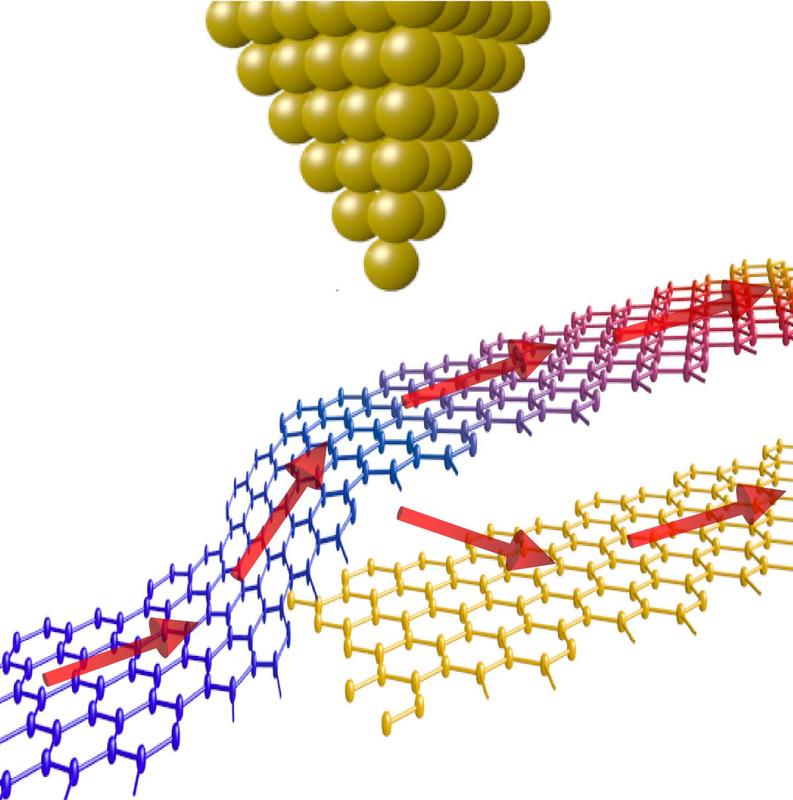

Electron transport in graphene: The picture shows the voltage drop colour-coded at the transition from monolayer graphene to bilayer graphene. The arrows indicate the electrons' movement.
Photo: University of Göttingen
Scientists from the Universities of Göttingen and Erlangen have made an important step towards a deeper understanding of smallest resistances. Using a scanning tunnelling microscope, the researchers succeeded in resolving the spatial extent of a voltage drop with sub-nanometer resolution for the first time. Their results were published in Nature Communications.
The physicists investigated the relationship between the voltage drop and resistance on the atomic scale. As their sample system they used graphene, a single layer of hexagonally oriented carbon atoms.
In their experiments, a current-carrying layer of graphene showed the expected linear voltage drop in defect-free regions of the sample. This is in contrast to the behaviour at local defects, for example the transition between layers: These transitions form barriers where the electrons are reflected, which leads to an abrupt voltage drop.
“Our findings show that the voltage drop is much greater in size than the actual defect,” explains doctoral candidate Philip Willke from Göttingen University’s IV. Physical Institute.
“Furthermore, we observed that the voltage drop is located almost completely in the bilayer. This problem can be compared to a highway that changes from two lanes to only one. The lane change, or in this case the change from one layer of graphene to the other, is extremely hard for the electrons.”
“Our results demonstrate that it is possible to characterise electron transport in non-equilibrium on the atomic scale and to distinguish between different scattering contributions,” adds Dr. Martin Wenderoth, head of the group.
“So far, this was only possible by theoretical calculations. Our findings will help to prove current theories and to establish a deeper understanding of electron transport itself.”
Original publication: Philip Willke et al. Spatial extent of a Landauer residual-resistivity dipole in graphene quantified by scanning tunnelling potentiometry. Nature Communications 2015. Doi: 10.1038/ncomms7399.
Contact:
Dr. Martin Wenderoth
University of Göttingen
Faculty of Physics – IV. Physical Institute
Friedrich-Hund-Platz 1, 37077 Göttingen
Phone +49 551 39-9367 or -4536
Email: wenderoth@ph4.physik.uni-goettingen.de
http://www.uni-goettingen.de/en/500611.html












